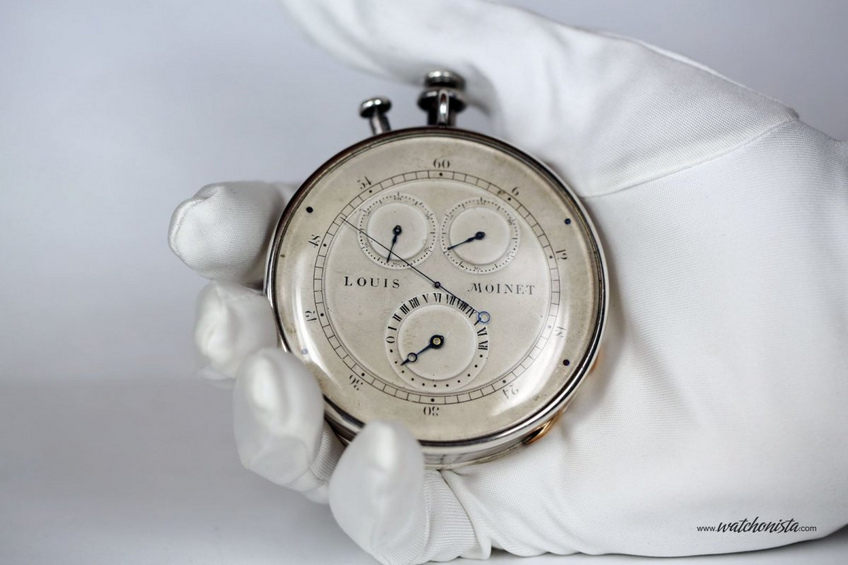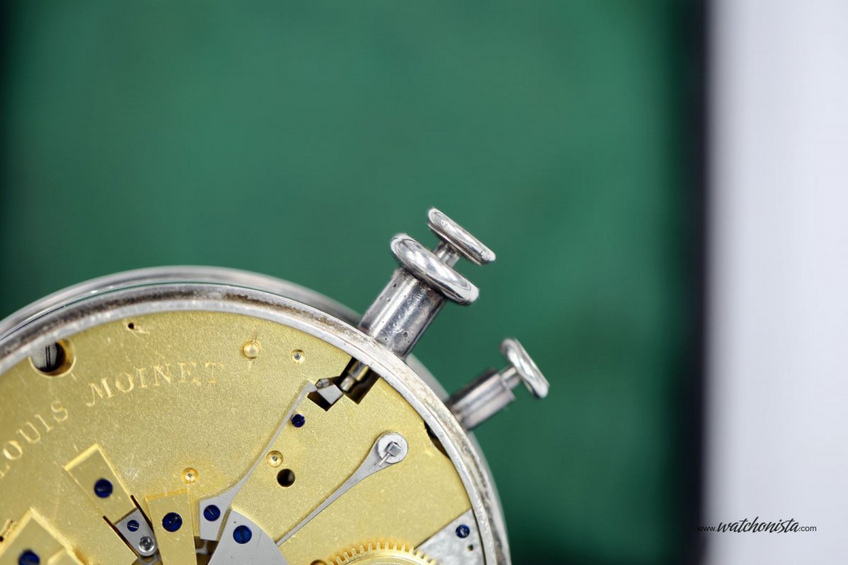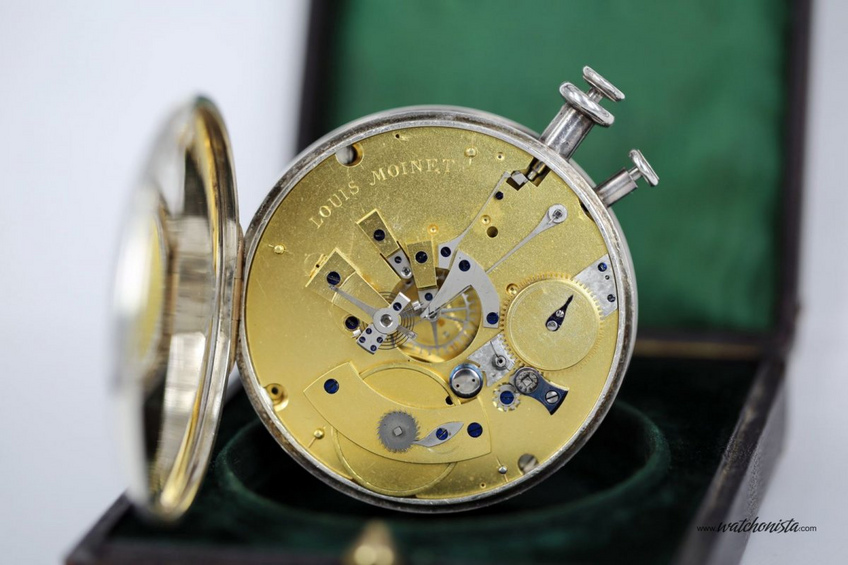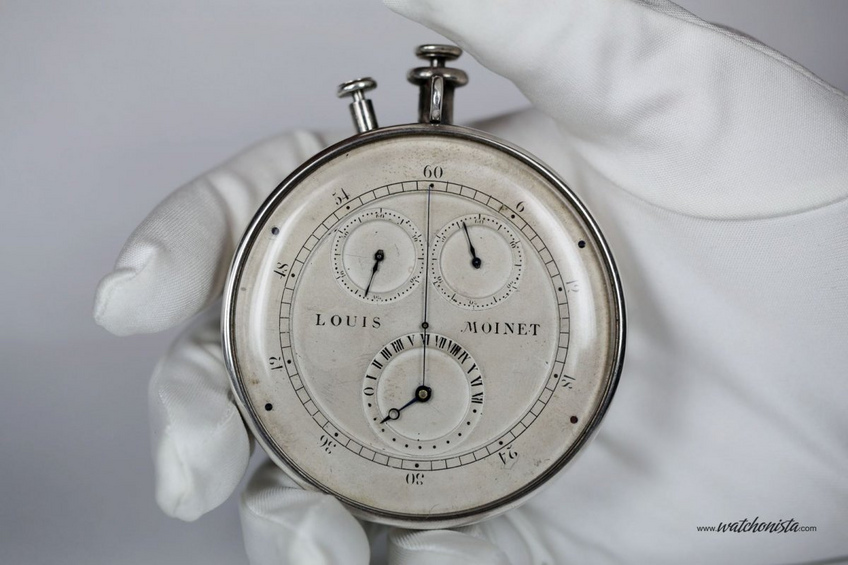

Louis Moinet Compteur de Tierces - Back to the future
Travelling back in time has always held a mystical appeal to vast swathes of the world’s population. Every individual has dreamt of retrospectively visiting a bygone era at some point in their lives. We would all love, at times, to rewrite history and influence the course of past events to determine an alternative conclusion.
Indeed, every time the lottery results are announced, I wish I could step back in history and select six numbers which would subsequently confer great fortune.
The concept of travelling in time hasn’t escaped Hollywood. In 1985, in common with millions of other cinemagoers, I remember watching the film “Back to the future”. The blockbuster movie saw the fictional character Marty McFly, played by Michael J. Fox, travel back in time to 1955 and observe his parents as adolescent teenagers embarking on a new relationship. A key aspect of this film was, of course, the silver hued DeLorean, modified into a time machine by the eccentric Doc Brown.

The appeal of the aforementioned film was stepping back to a time when everyone was unaware of the future. The whole population, with the exception of Marty and Doc, were yet to learn of men flying to the moon, The Beatles or Diet Coke.
It would seem Louis Moinet travelled back in time, armed with a wealth of knowledge gained in the 20th century, when he conceived the Compteur de Tierces. The pocket watch was unlike anything else previously created. It flew in the face of informed opinion, usurping every other horological machine to date, or indeed for several decades thereafter.
The inventor of the first chronograph
Louis Moinet commenced work on the chronograph in 1815 and completed his innovative watch the following year. Hallmarks adorning the watch attest to this fact. I had the good fortune to see the timepiece earlier this year at Baselworld and was flabbergasted by the sight of the central tierces hand in full flight. The technical prowess of this model was probably 100 years ahead of its time, an aspect I will return to later. However, first of all it is important to look at the history of the chronograph as it was once understood to be, prior to 2013.
Until 2013, it was widely believed that the first chronograph was conceived by Nicolas Mathieu Rieussec in 1822. The term chronograph originates from the amalgam of two words, “chronos”, the Greek word for time and, “graphein”, meaning write. The chronograph invented by Rieussec recorded elapsed time with ink, hence the name of the complication, and was patented in 1821.
However, in 2013, history was overturned with the discovery of the Louis Monet Compteur de Tierces, a chronograph dating back to 1816. This discovery necessitated a rewrite of history. Louis Moinet was the inventor of the first chronograph. This fact was later corroborated by a letter, dated 18th February 2013, and addressed to Bernard Vuilliomenet, a horological historian. The letter from the Musée international d’horlogerie La Chaux-de-Fonds, Switzerland, signed by Jean-Michel Piguet and Ludwig Oechslin confirmed the Compteur de Tierces as a “chronograph”.
Ground-breaking
Let us return to my earlier discussion of items which seemed out of kilter with the accepted horological norms of the time. Imagine for a second you are in a scene reminiscent of a Spaghetti Western, one cowboy is holding a six-shooter, such as the Colt Peacemaker, whilst his opponent is toting an Uzi sub-machine gun. The technological disparity of this scenario is obvious and renders one gun effectively redundant. This is exactly the same as the Compteur de Tierces.
The frequency of the Compteur de Tierces is 30Hz, a dizzyingly fast frequency, only recently mastered by a handful of maisons, nearly 200 years later.

The Louis Moinet Compteur de Tiercescan record 1/60th of a second, employing a large sweeping central chronograph hand. In 1816, 1/60th of a second was referred to as a third or tierce in French, hence the nomen of this timepiece. The long, centrally mounted, slender hand interfaces with a railway track scale framing the dial. This is legibly marked with 60 integers, making ease of read-off simple.
The high frequency of the movement results in the centrally positioned hand moving with a seamless gliding motion at near breakneck speed. This is in stark contrast to the majority of mechanical watches on which the centrally located hands move in small steps, dictated by the frequency of the movement used.
A detailed examination of the Compteur de Tierces
This pocket watch is large, measuring 57.7 mm in diameter with a case height of 9 mm. It features a tri-compax layout subsequently been found to be truly pioneering.
The push-piece, positioned at 12 o’clock, actuates the chronograph and will continue to run whilst pressed or with a pin threaded through the bow on top. Once the push-piece is released, or the pin removed, the chronograph will stop.

The Compteur de Tierceswas used, in conjunction with a telescope equipped with crosshairs, to accurately measure the passage of stars and planets with incredible precision. This timepiece was designed for astronomical observation and for this reason necessitated a high frequency movement. This would prove essential in delivering the desired degree of accuracy.
Adjacent 11 o’clock, a push-piece resets the central tierces chronograph hand. The return to zero function was unprecedented and pre-dates Adolphe Nicole’s patent of 1862. Yet again, the Compteur de Tiercesrewrites previously held horological beliefs.
The tri-compax layout includes a register at 2 o’clock showing elapsed seconds, a register at 10 o’clock, displaying elapsed minutes, and a 24 hour display positioned at the southerly aspect of the dial.
Remarkably, despite the watch being nearly 200 years old, the dial design has an air of modernity. Moreover, the dial is clean, simple to read and graceful in appearance, partly owing to the arcing profile of the dial presented.

The exterior beauty of the Compteur de Tiercesis complemented with a finely finished movement. The matchless polishing and flawless gilding denote this timepiece as exceptional.
Closing remarks
A remarkable aspect of this watch is that it is surprisingly modern in appearance, despite dating back to 1816. It delivers an abundance of no-compromise craftsmanship, some of which has.
Despite existing patents being held by others, history has shown that some inventions can pre-date these. However, this is typical of a time where communication was not the same as today and where two individuals in two different locations in the world, totally independent of each other, could simultaneously invent the same concept.
There is no doubt the Louis Moinet Compteur de Tierces is a technical tour de force, with majestic aesthetics and flawless finissage collaborating to make it a truly venerable horological masterpiece. The only question one might ponder is, “Was Louis Monet a time traveller from another era and did he travel back to the future?”



